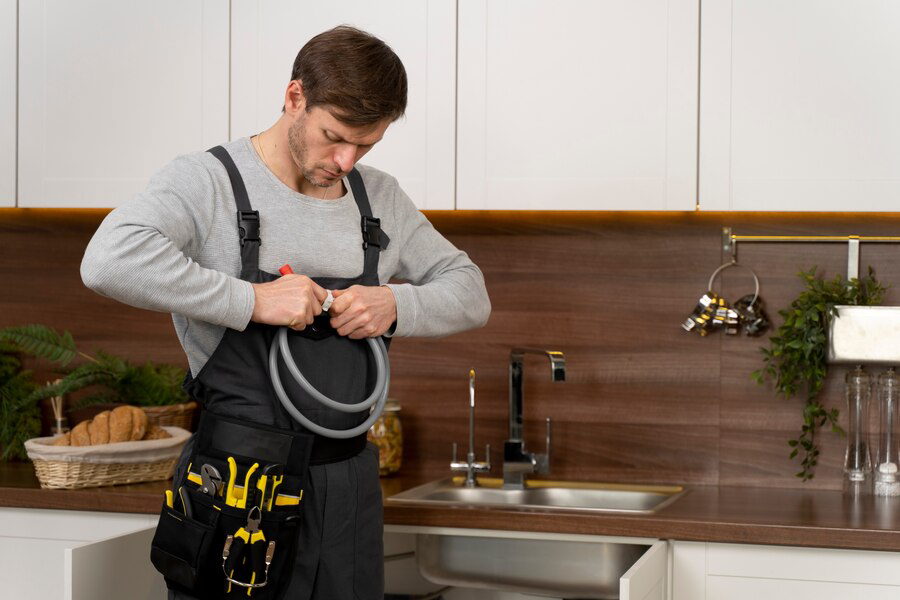As time passes, so does the infrastructure that supports our daily lives. From roads to buildings, every component ages, and with age comes a myriad of challenges. One such critical yet often overlooked aspect is the impact of aging infrastructure on residential plumbing systems. In homes across the country, hidden beneath floors and within walls, aging pipes quietly deteriorate, presenting a host of issues for homeowners and communities alike.
In this blog post, we delve into the intricate relationship between aging infrastructure and residential plumbing, exploring the various ways in which time takes its toll on pipes, fittings, and fixtures. From corrosion to structural weaknesses, the consequences of neglecting aging plumbing can be far-reaching, affecting everything from water quality to the integrity of entire plumbing networks. Join us as we uncover the importance of proactive maintenance and the strategies homeowners can employ to mitigate the challenges posed by aging infrastructure on their plumbing systems.
Signs Your Plumbing System Needs Attention
Is your plumbing trying to tell you something? While it might not speak in words, your plumbing system communicates through various signs and symptoms when it’s in need of attention. Ignoring these signals could lead to costly repairs and potential water damage. Here are some key indicators that your plumbing system requires immediate attention.

- Low Water Pressure: If you’ve noticed a significant decrease in water pressure throughout your home, it could indicate a blockage or leak in your plumbing system. Low water pressure may be a symptom of mineral buildup, pipe corrosion, or even a hidden leak within your walls.
- Slow Draining Fixtures: Are your sinks, tubs, or showers draining slower than usual? This could be a sign of a clog in your pipes. While minor clogs can often be cleared with a plunger or drain cleaner, persistent slow drainage may require professional assistance to prevent further issues.
- Unpleasant Odors: Foul smells emanating from your drains or pipes are not only unpleasant but could also indicate a more serious problem, such as a sewer line blockage or bacterial growth within your plumbing system. Addressing the source of the odor promptly can help prevent contamination and health risks.
- Visible Leaks or Water Damage: Leaking pipes, faucets, or fixtures should never be ignored. Even minor leaks can lead to water damage, mold growth, and structural issues if left untreated. Inspect your plumbing regularly for signs of moisture or water stains, especially in areas prone to leaks such as under sinks or around appliances.
- Rusty or Discolored Water: Brown or rusty-colored water coming from your taps is a clear indication of corroded pipes. Not only is rusty water unappealing, but it can also stain your fixtures and indicate potential health hazards. Have your plumbing system inspected if you notice any changes in water color or quality.
Planning for the Future of Residential Plumbing
In the realm of home maintenance, few things are as critical as ensuring the longevity and efficiency of your plumbing system. As infrastructure ages and environmental concerns become increasingly pressing, planning for the future of residential plumbing is more important than ever. Here’s how you can navigate this crucial aspect of homeownership.

Regular Inspections and Maintenance
One of the most effective strategies for ensuring the future health of your plumbing system is to conduct regular inspections and maintenance checks. By scheduling annual inspections with a qualified plumber, you can identify potential issues early on and address them before they escalate into costly repairs.
Invest in Quality Materials
When it comes to plumbing fixtures and materials, quality matters. While it may be tempting to cut costs with cheaper alternatives, investing in high-quality pipes, fittings, and fixtures can pay off in the long run by reducing the likelihood of leaks, corrosion, and other problems.
Upgrade to Water-Efficient Fixtures
With water scarcity becoming an increasingly pressing issue in many parts of the world, upgrading to water-efficient fixtures is not only environmentally responsible but also financially savvy. Consider installing low-flow toilets, aerated faucets, and water-saving shower heads to reduce your water consumption and lower your utility bills.
Consider Alternative Water Sources
As concerns about water scarcity grow, many homeowners are exploring alternative water sources such as rainwater harvesting systems and greywater recycling systems. These systems allow you to capture and reuse water for purposes like irrigation and toilet flushing, reducing your reliance on traditional water sources.
Stay Informed About Emerging Technologies
The field of plumbing is constantly evolving, with new technologies and innovations emerging all the time. Stay informed about advancements in areas such as pipe materials, leak detection systems, and smart home integration, and consider incorporating these technologies into your plumbing system to improve efficiency and convenience.
Addressing Aging Plumbing Infrastructure
As our cities and neighborhoods continue to age, the infrastructure supporting our homes faces inevitable wear and tear, and one critical aspect often overlooked is the plumbing system. Aging plumbing infrastructure can lead to a myriad of issues, from leaks and bursts to compromised water quality, posing risks to both property and health. In this article, we’ll delve into the importance of addressing aging plumbing infrastructure and provide actionable steps to mitigate its impact on residential properties.
Understanding the Impact of Aging Infrastructure
Aging infrastructure in residential plumbing systems manifests in various ways, including corrosion of pipes, deterioration of joints, and outdated materials. These issues not only compromise the structural integrity of the plumbing system but also increase the likelihood of leaks and bursts, resulting in costly repairs and potential property damage. Additionally, as pipes degrade over time, they can introduce contaminants into the water supply, posing health risks to occupants.
Proactive Maintenance and Inspection
Proactive maintenance and regular inspections are crucial for addressing aging plumbing infrastructure. Homeowners should schedule routine checks of their plumbing system to identify any signs of wear or deterioration. This includes inspecting visible pipes for corrosion, checking for leaks or water stains, and testing water quality for any abnormalities. By detecting issues early on, homeowners can take preventive measures to avoid more significant problems down the line.
Upgrading to Modern Materials and Technologies
One effective way to address aging plumbing infrastructure is by upgrading to modern materials and technologies. For instance, replacing old, corroded pipes with more durable materials like copper or PVC can improve the longevity and efficiency of the plumbing system. Similarly, installing water-saving fixtures and appliances can reduce water usage and lower utility bills while minimizing strain on aging infrastructure.
Investing in Professional Repairs and Upgrades
In some cases, addressing aging plumbing infrastructure may require professional repairs or upgrades. Whether it’s repairing a leaky pipe, replacing worn-out fixtures, or re-piping an entire section of the home, investing in professional plumbing services can ensure the job is done correctly and efficiently. Professional plumbers have the expertise and tools to diagnose issues accurately and recommend the most suitable solutions for addressing aging infrastructure.
Educating Homeowners on Maintenance Practices
Educating homeowners on proper maintenance practices is essential for addressing aging plumbing infrastructure. This includes providing guidance on simple tasks such as regular cleaning of drains and fixtures, as well as more complex procedures like winterizing pipes to prevent freezing and bursts. By empowering homeowners with knowledge and resources, they can take proactive steps to preserve the integrity of their plumbing system and extend its lifespan.
Conclusion
EZI Plumbing, we recognize the critical significance of addressing the repercussions of aging infrastructure on residential plumbing systems. As we operate in Chain Valley Bay, NSW, Australia, we understand firsthand the challenges posed by deteriorating plumbing infrastructure. Through our dedicated efforts and expertise, we aim to mitigate these challenges by offering innovative solutions and reliable services. Our commitment to ensuring the functionality and longevity of residential plumbing systems remains unwavering, as we continue to prioritize the well-being and satisfaction of our customers in Chain Valley Bay and beyond. For expert assistance, contact us at +61 448467788.

